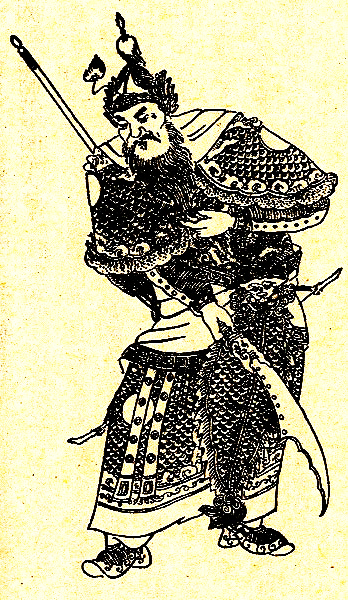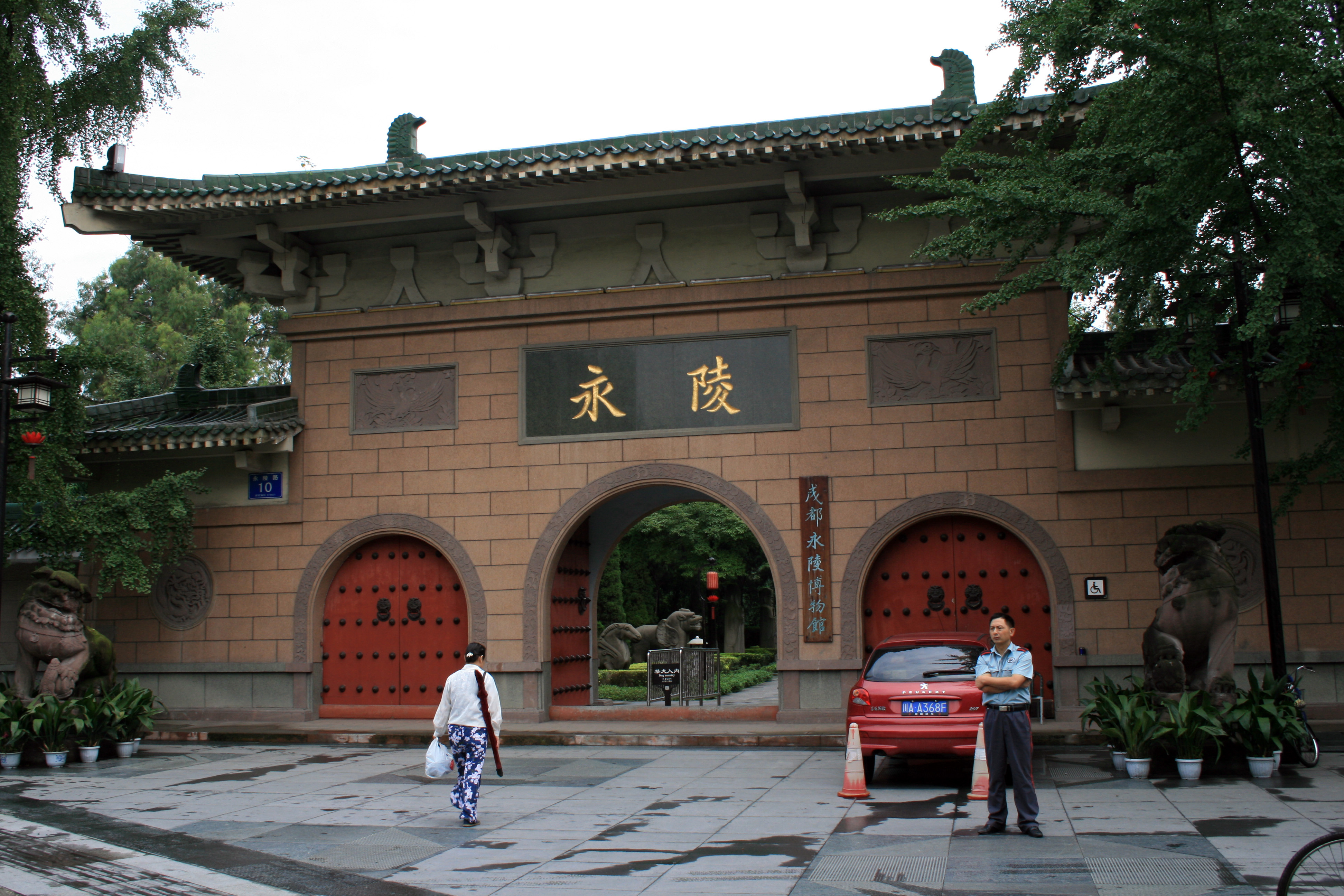|
Huang Quan (painter)
Huang Quan (903–965), courtesy name Yaoshu, was a Chinese painter during the Five Dynasties period and the Song dynasty who worked in the imperial painting academies of the Former Shu, Later Shu and Song dynasties. Along with Xu Xi, Huang is considered a founding master of the bird-and-flower painting. Huang Quan was highly prolific: the 1120 catalog ''Xuanhe Huapu'' alone critiques 349 of his works. Unfortunately few are extant. Early life Huang Quan was born in 903, when the Tang empire had irretrievably collapsed into warlordism and civil strife. Around this time, many painters took refuge in Chengdu, Huang Quan's hometown and the capital of the relatively peaceful Xichuan Circuit, then controlled by the warlord Wang Jian. (Wang Jian founded the Former Shu empire in 907 after the Tang dynasty ended.) When Huang Quan was 12, he began his study of painting with the bird-and-flower painter Diao Guangyin (刁光胤), who had arrived in Chengdu from the Tang capital Chang'an i ... [...More Info...] [...Related Items...] OR: [Wikipedia] [Google] [Baidu] |
Huang (surname)
Huang (; ) is a Chinese surname that originally means and refers to jade people were wearing and decorating in ancient times. While ''Huáng'' is the pinyin romanization of the word, it may also be romanized as Hwang (Korean surname), Hwang, Wong (surname), Wong, Waan, Wan, Waon, Hwong, Vong, Hung, Hong, Bong, Eng, Ng (name), Ng, Uy (surname), Uy, Wee, Oi, Oei, Oey, Ooi, Ong, or Ung due to pronunciations of the word in different dialects and languages. It is the 96th name on the ''Hundred Family Surnames'' poem.K. S. Tom. [1989] (1989). Echoes from Old China: Life, Legends and Lore of the Middle Kingdom. University of Hawaii Press. . This surname is known as Hwang (Korean name), Hwang in Korean language, Korean. In Vietnamese language, Vietnamese, the name is known as Hoàng or Huỳnh. Huang is the 7th most common surname in China. Huynh is the 5th most common surname in Vietnam. The population of Huangs in China and Taiwan was estimated at more than 35 million in 2020; it was a ... [...More Info...] [...Related Items...] OR: [Wikipedia] [Google] [Baidu] |
Xuanhe Huapu
''Xuanhe Huapu'' (宣和畫譜, "The Xuanhe Catalogue of Paintings") is an 1120 Chinese palace catalog from the Song dynasty, which in 20 chapters categorized and described ~6396 paintings by 231 artists in the collection of Emperor Huizong of Song. "Xuanhe" (1119–1125) is an era name A regnal year is a year of the reign of a sovereign, from the Latin ''regnum'' meaning kingdom, rule. Regnal years considered the date as an ordinal, not a cardinal number. For example, a monarch could have a first year of rule, a second year o ... used by Emperor Huizong. The book is one of the most important sources about 11th/12th-century Chinese art, even if most paintings it described are no longer extant. (Emperor Huizong, a talented painter/connoisseur but inept ruler, was captured by the invading Jin dynasty army in 1127, and his collection was thus lost.) Contents The catalog contains 20 chapters, divided into categories: Biographies of artists are arranged under the category for whi ... [...More Info...] [...Related Items...] OR: [Wikipedia] [Google] [Baidu] |
Song Dynasty Painters
A song is a musical composition intended to be performed by the human voice. This is often done at distinct and fixed pitches (melodies) using patterns of sound and silence. Songs contain various forms, such as those including the repetition and variation of sections. Written words created specifically for music, or for which music is specifically created, are called lyrics. If a pre-existing poem is set to composed music in classical music it is an art song. Songs that are sung on repeated pitches without distinct contours and patterns that rise and fall are called chants. Songs composed in a simple style that are learned informally "by ear" are often referred to as folk songs. Songs that are composed for professional singers who sell their recordings or live shows to the mass market are called popular songs. These songs, which have broad appeal, are often composed by professional songwriters, composers, and lyricists. Art songs are composed by trained classical composers fo ... [...More Info...] [...Related Items...] OR: [Wikipedia] [Google] [Baidu] |
965 Deaths
Year 965 ( CMLXV) was a common year starting on Sunday (link will display the full calendar) of the Julian calendar. Events By place Byzantine Empire * Arab–Byzantine War: Emperor Nikephoros II conquers the fortress cities of Tarsus and Mopsuestia. The Muslim residents abandon the defense and flee into Syria. Nikephoros completes the conquest of Cilicia; Muslim raids into Anatolia (modern Turkey) permanently cease. Byzantine troops under General Niketas Chalkoutzes occupy Cyprus, liberating the Greek population from Muslim domination. * Battle of the Straits: The Byzantine attempt to recover Sicily fails, when the Byzantine fleet is annihilated by the Fatimids. The last Byzantine stronghold on the island, Rometta, surrenders. The population is massacred, and the survivors are sold into slavery. Caliph Al-Mu'izz li-Din Allah completes the conquest of Sicily, and establishes naval superiority in the Western Mediterranean. Europe * Spring – King Lothair III ... [...More Info...] [...Related Items...] OR: [Wikipedia] [Google] [Baidu] |
903 Births
__NOTOC__ Year 903 ( CMIII) was a common year starting on Saturday (link will display the full calendar) of the Julian calendar. Events By place Europe * King Berengar I of Italy proceeds to issue concessions and privileges to the Lombard nobility and monasteries. He grants concessions to Bobbio Abbey in Emilia-Romagna (Northeast Italy). * King Louis IV ("the Child") promulgates the Raffelstetten customs regulations, a legal document for a toll-bridge on the Danube River in Asten (modern Austria). Britain * The Danish Vikings invade Anglesey after being driven out of Dublin (see 902). They fail to gain a foothold in Wales, and sail on to Chester. * A party of Danes under the Viking warlord Ingimundr attack the Welsh in a pitched battle at Maes Ros Meilon, perhaps near Llanfaes. Arabian Empire *November 29 – Battle of Hama: Abbasid forces under Muhammad ibn Sulayman al-Katib defeat the Qarmatians near Hama, on the banks of the Orontes River (modern Syria) ... [...More Info...] [...Related Items...] OR: [Wikipedia] [Google] [Baidu] |
Franz Steiner Verlag
Franz Steiner Verlag GmbH is a German academic publishing house, with headquarters in Stuttgart. Founded in 1949 in Wiesbaden, its specialty is history, although it also publishes works in geography, philosophy, law, and musicology. Journals published by Franz Steiner include '' Historia'', ''Geographische Zeitschrift'', ''Hermes Hermes (; grc-gre, Ἑρμῆς) is an Olympian deity in ancient Greek religion and mythology. Hermes is considered the herald of the gods. He is also considered the protector of human heralds, travellers, thieves, merchants, and orato ...'', and '' Zeitschrift für französische Sprache und Literatur''. References External links * (German) Publishing companies established in 1949 Book publishing companies of Germany Publishing companies of Germany Companies based in Wiesbaden Companies based in Stuttgart Mass media in Stuttgart 1949 establishments in Germany {{publisher-stub ... [...More Info...] [...Related Items...] OR: [Wikipedia] [Google] [Baidu] |
Chinese Literature (magazine)
''Chinese Literature'', in some years ''Chinese Literature: Fiction, Poetry, Art'', was an English-language literary magazine of Chinese literature in translation. It was founded in 1951 by Yeh Chun-chan (), Sidney Shapiro, Yang Xianyi, and Gladys Yang. The headquarters was in Beijing. In 1956, ''Chinese Literature'' was incorporated into the state-run Foreign Languages Press Foreign Languages Press is a publishing house located in China. Based in Beijing, it was founded in 1952 and currently forms part of the China International Publishing Group, which is owned and controlled by the Publicity Department of the Chi .... Publication ceased in 2000, but newer contents appeared on its website for a time. The magazine ran quarterly from 1951 to 1957, bimonthly in 1958, monthly from 1959 to 1983, quarterly from 1984 to 1999, and bimonthly in 2000. Over 2000 writers and artists were featured in the issues. See also * Pathlight (magazine), ''Pathlight'' (magazine) * ''Renditions'' ... [...More Info...] [...Related Items...] OR: [Wikipedia] [Google] [Baidu] |
Chang'an
Chang'an (; ) is the traditional name of Xi'an. The site had been settled since Neolithic times, during which the Yangshao culture was established in Banpo, in the city's suburbs. Furthermore, in the northern vicinity of modern Xi'an, Qin Shi Huang of the Qin dynasty, China's first emperor, held his imperial court, and constructed his massive mausoleum guarded by the Terracotta Army. From its capital at Xianyang, the Qin dynasty ruled a larger area than either of the preceding dynasties. The imperial city of Chang'an during the Han dynasty was located northwest of today's Xi'an. During the Tang dynasty, the area that came to be known as Chang'an included the area inside the Ming Xi'an fortification, plus some small areas to its east and west, and a substantial part of its southern suburbs. Thus, Tang Chang'an was eight times the size of the Ming Xi'an, which was reconstructed upon the site of the former imperial quarters of the Sui and Tang city. During its heyday, Chang'an w ... [...More Info...] [...Related Items...] OR: [Wikipedia] [Google] [Baidu] |
Wang Jian (Former Shu)
Wang Jian (; 847 – July 11, 918), courtesy name Guangtu (光圖), also known by his temple name as the Emperor Gaozu of Former Shu (前蜀高祖), was the founding emperor of the Former Shu, one of the ten kingdoms during the Five Dynasties and Ten Kingdoms period in Chinese history. He started his career as an army officer under the Tang dynasty eunuch generals Yang Fuguang and Tian Lingzi, eventually seizing control of the modern Sichuan and Chongqing region, founding his state after Tang's destruction. Background Wang Jian was born in 847, during the reign of Emperor Xuānzong of Tang. He was from Wuyang (舞陽, in modern Luohe, Henan), and was said to be ambitious and alert in his youth. However, he was also described to be a hoodlum, abandoning his ancestral craft of baking to be involved in butchering cattle, stealing donkeys, and privateering in salt. His father died while he was still a commoner. At one point, for misdeeds, he was incarcerated at the jail at Xuc ... [...More Info...] [...Related Items...] OR: [Wikipedia] [Google] [Baidu] |
Xichuan Circuit (西川路), a circuit during the late Tang dynasty and early Song dynasty
{{geodis ...
Xichuan may refer to these places in China: *Xichuan County (淅川县), a county in Henan * Xichuan, Gansu (西川镇), a town in Qin'an County, Gansu * Xichuan Township (西川乡), a township in Ninglang Yi Autonomous County, Yunnan *Xichuan Circuit Xichuan may refer to these places in China: * Xichuan County (淅川县), a county in Henan * Xichuan, Gansu (西川镇), a town in Qin'an County, Gansu * Xichuan Township (西川乡), a township in Ninglang Yi Autonomous County, Yunnan * Xichuan C ... [...More Info...] [...Related Items...] OR: [Wikipedia] [Google] [Baidu] |
Bird-and-flower Painting
Bird-and-flower painting, called () in Chinese, is a kind of Chinese painting with a long tradition in China and is considered one of the treasures of Chinese culture. The was named after its subject matter. It originated in the Tang dynasty where it gained popularity, matured at the of the Tang dynasty and during the Five Dynasties and Ten Kingdoms period, and fully reached its peak during the Song dynasty where it clearly became socially relevant in Chinese culture. Normally, most paintings belong to the scholar-artist style of Chinese painting. The became prevalent in East Asia, where it was introduced in Japan during the 14th century and was introduced in Korea. Intended purpose and cultural significance According to Chinese tradition, the covers "flowers, birds, fish, and insects" (); thus, it can deal with a wide range of natural topics, including flowers, fish, insects, birds, pets (dogs, cats), etc. The paintings are inspired by the resilience and the beauty of t ... [...More Info...] [...Related Items...] OR: [Wikipedia] [Google] [Baidu] |






